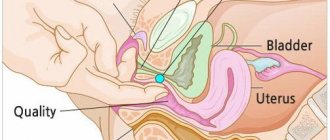Pirogov developed and implemented in the Russian army a protocol for helping victims of battles: the sequence of actions of nurses and doctors, the sequence of procedures. Thanks to this, many soldiers and officers survived even after serious wounds. A. Sidorov “N. I. Pirogov operates on a wounded man under ether anesthesia", Aul Salta, 1847 TASS
Discoverers, scientists, engineers and other Kulibins. In the new educational project “Time of the First” we will remind you who every resident of Russia can truly and without embarrassment be proud of.
Nikolay Pirogov
Discoveries: operations under anesthesia, plaster casts, military field medicine and nurses
It’s scary to imagine, but at the end of the 19th century, when people traveled on carts, serfdom had not yet been abolished, and cholera was decimating the population of Russia, this great doctor performed the first painless operation on a person.
In 1847, a year after the miracle of ether anesthesia had just been demonstrated in Massachusetts, surgeon and polyglot Nikolai Pirogov, who had studied abroad - in Tartu, Gottingen and Berlin - and had extensively practiced on cats, calves, dogs and himself, performed the first operation (!) on a person, inventing a device for inhalation of ether fumes (“sweet vitriol”). And not in calm laboratory conditions, but in the Second Military Land Hospital of St. Petersburg, after which the heroic doctor rushed to the Caucasus, where the war was going on, and operated on wounded soldiers in an innovative way literally in a hut, on his knees and “looking death right in the face.” ", as indicated in letters to his wife. After that there was Sevastopol and the Crimean War. For the first time in the world, such operations took place immediately after the battle. That is why Pirogov went down in military history as the founder of military field medicine - he also developed an algorithm for helping the wounded: assistance, treatment, removal from the field, transportation.
He was the first to apply plaster (“a molded alabaster bandage”) instead of a wooden splint for fractures. The doctor was prompted to an elegant solution by the sculptor Nikolai Stepanov, while visiting whom Pirogov saw how the artist impregnated canvases with gypsum solution, giving them the desired shape. In 1852, Nikolai Ivanovich and his colleagues began to use a hardening plaster cast to fix a broken limb. And this is not a cosmetic measure at all: in fact, in the past, after complex fractures, arms or legs were simply amputated.
Pirogov also insisted on sanitizing infirmaries, clothes and surgeons’ instruments, which helped avoid thousands of deaths due to the then common spread of infection. He also introduced the principle of grading injuries according to severity at Sevastopol transshipment points. He also developed the institute of sisters of mercy - women who helped the wounded at the front. And he structured the knowledge by compiling the atlas “Topographic Anatomy,” which has no analogues in the world: Pirogov’s scientific works laid the foundation for experimental vascular surgery, topographic (surgical) anatomy, and bone grafting.
But the most important and surprising thing, of course, is that it was Pirogov who, through a mass of operations, introduced the widespread use of intravenous and intratracheal anesthesia in Russia, and then throughout the world. We owe the absence of pain during the most complex manipulations with the human body to this grandfather with a merchant appearance.
Sergey Botkin
Famous Russian doctors have made a significant contribution to the development of domestic medicine. In the 19th century, one of these doctors was Sergei Petrovich Botkin. He graduated from Moscow University, participated in the Crimean War, and saved the lives of the wounded in the Simferopol hospital. Worked in foreign clinics in England, Germany, France.
Botkin was one of the first to initiate the organization of women's medical education. He founded medical courses for women and a school for paramedics.
On his initiative, the Epidemiological Society was opened in Russia in 1860, which successfully began to fight the spread of infectious diseases. Diseases such as cholera, plague, scarlet fever, diphtheria, and smallpox were carefully studied. As part of the research, the causes of hepatitis A (popularly jaundice) were identified. Since then, the disease has been called Botkin.
Thanks to Sergei Petrovich, attention began to be given to the poor; doctors began receiving them, making home visits and providing them with the necessary medications. Soon the first ambulance appeared in Russia. The first free hospital was opened in 1881.
The most famous doctors in Russia were students of Botkin, these are A. A. Nechaev, N. Ya. Chistovich, M. V. Yanovsky, I. P. Pavlov, T. P. Pavlov, A. G. Polotebnov, N. P. Simanovsky .
Mikhail Chumakov
In 1944, he identified the virus of a severe disease that engulfed parts of the Red Army after the liberation of Crimea. Photo: RIA Novosti
Discoveries: tick-borne encephalitis virus, Omsk hemorrhagic fever virus and other infections, polio vaccine and mass vaccination in the USSR
Recently, almost everyone has heard the name Chumakov - at least from the name of the Center. M.P. Chumakov, who released the coronavirus vaccine
“CoviVac”: a peptide vaccine with almost zero side effects, also effective against the actively spreading fresh strain of COVID-19 “delta”.
Virologist Mikhail Chumakov became famous long before this. Born in the depths of the Tula region, the bacteriologist in 1937 went on a scientific expedition to the Far East to study the emergence of tick-borne encephalitis in the Khabarovsk Territory. He was the first to isolate the virus of this infectious neurological disease, and during the war he identified foci of the spread of encephalitis, thereby saving tens of thousands of lives. But I don’t have myself: after a tick bite, I completely lost my hearing (I walked with a hearing aid for the rest of my life) and my limbs—my right arm was paralyzed.
In 1944, he identified the virus of a severe disease that engulfed parts of the Red Army after the liberation of Crimea. He studied the virus, developed a treatment system and named it Crimean hemorrhagic fever. From 1947 to 1950, in the same way, he identified another infection - Omsk hemorrhagic fever and freed Siberia, the Yaroslavl and Tver regions from the disease.
And then Chumakov saved the world from polio, that is, from extinction and paralysis. Yes, yes, the same vaccination that we were given from birth in the USSR was the invention of this particular great professor. After all, almost 70 years ago, the world was gripped by a powerful pandemic - polio (an acute infectious disease that affects the nervous system of children), as a result of which paralysis occurred in half of those who were ill. Everyone began to wait for salvation - sounds familiar, right?
Only without shouting about chipping and dire consequences, but to obediently wait, hanging on every word of the doctors. In 1956, three Soviet researchers - corresponding member of the Academy of Sciences Mikhail Chumakov, his wife and colleague, virologist Marina Voroshilova and Leningrad academician Anatoly Smorodintsev - were sent to the United States to work with their American colleagues to develop a drug against paralytic polio. The world faced a serious threat, so the Cold War was forgotten for a while. Professor Chumakov began his work using as a basis the strains of the “live vaccine” of the Polish virologist Albert Sabin (poliomyelitis virus grown on the kidney culture of African green monkeys). They were brought to the Soviet Union in an ordinary suitcase, and already in 1959, the technology of an industrial large-scale preparation of a live vaccine was created, providing people with lasting immunity for life. It was under the leadership of Chumakov, at the Institute of Poliomyelitis and Viral Encephalitis, that the drug was quickly launched into industrial production, which America did not dare to do.
In 1959, the USSR began mass vaccination (write it down!) - in kindergartens and schools. The development scientists gave “droplets” of the vaccine to their children and grandchildren. The epidemic was stopped for several months - from a thousand cases to six. During 1960 and 1961, 100 million people were vaccinated in the country, the incidence rate decreased by 120 times. “The Russians carried out a lightning strike
the war against polio and won, spending ten times less time to defeat the enemy than the Americans,” said a stunned Sabin. The vaccine has been used by more than 60 countries, helping to stop major polio outbreaks in Japan and Eastern Europe. Chumakov’s research formed the basis of the WHO program to eliminate the disease on the planet.
Ivan Pavlov
An outstanding physiologist from a family of priests received the Nobel Prize in Medicine first among Russian scientists and first among all doctors for theoretical medicine.
Photo: TASS
Discoveries: creation of the doctrine of higher nervous activity of animals and humans, study of the mechanisms of digestion, discovery of the phenomenon of conditioned reflex
An outstanding physiologist from a family of priests received the Nobel Prize in Medicine first among Russian scientists and first among all doctors for theoretical medicine. This happened in 1904, when Swedish academics appreciated Ivan Pavlov’s contribution to the study of digestive mechanisms (“Pavlovian fistulas”, “Pavlovian isolated ventricle”, etc.).
Ryazan resident Pavlov founded the “world capital of conditioned reflexes” in Koltushi, a suburb of St. Petersburg. At the biological station, through painstaking scientific work and innovative experiments, he created a new branch of science - the physiology of higher nervous activity based on a phenomenon he discovered: the conditioned reflex (the so-called Pavlov's dog reflex). Colleagues from Europe recognized the bearded old man as the world's first physiologist. It was Ivan Petrovich who formulated the most important distinctive abilities of the brain - the second signaling system: the basics of speech function, the ability to write, analyze and generalize. He was one of the first to establish and begin to develop the influence of genetic factors on human behavior.
Vladimir Vinogradov
Vladimir Vinogradov began his activities by studying the problems of sepsis, early diagnosis of tuberculosis, and cancer. Later his research expanded. Now his name is associated with the use of examination methods in medicine - bronchoscopy and gastroscopy, radioisotope diagnostics of thyroid problems. The contribution of the academician in the field of cardiology and the treatment of myocardial infarction is undeniable. In 1961, on the initiative of Vinogradov, the first department for patients with myocardial infarction was opened.
For the first time, the practice of probing with the introduction of a radiopaque substance began to be used. The most famous doctors in Russia dealing with cardiac problems have adopted this method.
Zinaida Ermolyeva
After the first tests in the capital, Zinaida Ermolyeva went to test the drug in the field. The result was amazing: seriously ill patients survived.
Photo: TASS
Discoveries: the world's most effective penicillin using a unique technology and a number of other well-known antibiotics (chloramphenicol, streptomycin), as well as the antiviral drug interferon
On November 24, 1944, Soviet troops liberated Latvia, Lithuania and Estonia and advanced significantly to the west, sweeping away the enemy. However, the losses were significant. Then, during the Baltic offensive operation, the freshest Soviet antibiotic, crustozin (an analogue of penicillin), was used for the first time in the field. Thanks to the drug just obtained by Soviet scientists, mortality from wounds and infections in the army decreased by a seemingly impossible 80%, and the number of limb amputations by 30%. The project for introducing the drug into circulation was led by microbiologist Zinaida Ermolyeva, whom foreign colleagues respectfully called Madame Penicillin.
As Professor Pirogov has already established (see above), wounds in war are most often dangerous due to infectious infections, which not everyone can endure. Penicillin, invented by Scotsman Alexander Fleming in 1928, became an effective method of killing the infection. In the USSR, the medicine was supplied in mini doses, the production technology was closed, so our microbiologists were given the task of developing a high-quality analogue of penicillin. It was obtained by Zinaida Ermolyeva, an epidemiologist who successfully suppressed an outbreak of cholera and typhoid fever at the front in Stalingrad in 1942, and before that in Afghanistan in 1939. And these were not the first and not accidental victories over the infection.
Having thoroughly studied the biochemistry of microbes, Don Cossack Zinaida Vissarionovna, who in her youth resembled Nonna Mordyukova, almost died for the sake of humanity in the 20s: she isolated cholera-like vibrios from simple tap water - to understand whether they were capable of causing cholera, inoculated them into herself, and drank the water with millions of microbial bodies dissolved in her, after 18 hours she fell ill and almost died. So she discovered a glowing cholera-like embryo, which was later named in her honor.
After the task of the Soviet leadership to develop our penicillin, Ermolyeva just as desperately set to work. Together with her colleagues, the microbiologist brought mold from trees and lawns to the laboratory to find the fungus necessary for production, which, when encountered, kills the pathogenic staphylococcus bacteria. Scientists grew mold on food, collected it on the ground, but it was not the same. The ninety-third sample gave the necessary penicillin activity - it was mold from the wall of a bomb shelter. This is how the Soviet “penicillin-crustosin” appeared.
After the first tests in the capital, Ermolyeva went to test the drug in the field. The result was amazing: seriously ill patients survived. “Not a single amputated leg!” — she reported happily.
In 1943, mass production of the drug began, and a year later a foreign commission headed by British pharmacologist Professor Howard Flory arrived in the USSR to compare the work of penicillin and crustozin.
Our drug turned out to be 1.4 times more effective.
Vladimir Demikhov
The genius of Soviet transplantology and cardiac surgery - and the father of the world, why be modest - he could have made the slogan “And instead of a heart - a fiery engine” his life motto. Photo: RIA Novosti
Discoveries: heart and lung transplantation, creation of an artificial heart model
The genius of Soviet transplantology and cardiac surgery - and the father of the world, why be modest - he could have made the slogan “And instead of a heart - a fiery engine” his life motto. Because it was Vladimir Petrovich who was such a bold experimenter (a dog with two heads!) that he literally learned to revive the dead. Not like Jesus Christ, but like a Soviet scientist with golden hands.
The doctor began with revolutionary experiments in organ transplantation for dogs. Even before the Great Patriotic War, a young and daring doctor was the first to create and implant a mechanical model of the heart into the chest cavity of a dog (1937). In the same year, he developed an artificial heart model. Back then, everyone was basically pointing their fingers at their heads: how and who could this be useful for? But the loner Demikhov continued to develop his fantastic practice - in 1946, he performed the world's first heart transplant into the chest cavity of a dog and the world's first heart-lung transplant in a dog. This was unprecedented. A worldwide sensation, noted by the press and scientific community of the world. Then lung transplants were successfully completed using the complete replacement method. In 1948, he began successful experiments on liver transplantation; the idea was immediately picked up by American doctors. In 1952, he was the first in the world to develop and perform mammary coronary bypass surgery on a dog - he brought a healthy vessel to the heart from the aorta, bypassing the damaged one.
Well, in 1954, the doctor again shocked the whole world by showing... a two-headed dog: he managed to transplant the head, shoulders and front legs of a puppy onto the neck of a German shepherd - the heads took food, reacted to each other and even played with each other. Then the technique of complete simultaneous replacement of the heart and lungs combined was finally developed.
In 1960, Demikhov published the monograph “Experimental Transplantation of Vital Organs” - the world’s first manual on transplantology, which remained the only one for many years.
In 1988, the doctor was awarded the State Prize. The author of the first human heart transplant, Christian Barnard (South Africa), considered Demikhov a teacher and came to him in Moscow for consultations. All their lives, the family of the brave doctor who changed the world lived in cramped conditions, in a small apartment, next to the operated dogs, which Vladimir Petrovich nursed at home. He wrote the scientific works that brought him world fame in the kitchen. Demikhov also had six front-line awards.
Famous female doctors of Russia
If we talk about the most famous world-class female doctors, then, of course, we cannot help but remember our Russian doctors.
Natalya Bekhtereva
During her life she was awarded many titles and a variety of awards in the field of medicine. The main study is the area of the brain in normal and pathological conditions. For the first time, the method of implanting electrodes into the brain was used not only for diagnostic, but also for therapeutic purposes. Under the leadership of Bekhtereva, a new branch of neurosurgery and neurology was created.
Grunya Sukhareva
Leading psychiatrist of the USSR. She has written many works and conducted a lot of research in the field of studying mental disorders and schizophrenia. She organized many institutions for children and adolescents with mental disabilities. For many years she was the head of the hospital named after. Kashchenko.
The very first female doctors in Russia are N. P. Suslova, M. A. Bokova-Sechenova, V. A. Kashevarova-Rudneva.
WHO ELSE
Surgeon and anatomist Ilya Buyalsky (1789 - 1866).
The surgeon and anatomist Ilya Buyalsky (1789 - 1866) laid the first foundations of topographic anatomy even before Nikolai Pirogov.
Biologist Ilya Mechnikov (1845 - 1916).
Biologist Ilya Mechnikov (1845 - 1916) is one of the founders of comparative pathology, evolutionary embryology and immunology, who discovered the phenomenon of phagocytosis in 1883 (when cells of the immune system devour bacteria and viruses, protecting the body). In 1901, he outlined the cellular theory of immunity and proposed a theory of the origin of multicellular organisms.
Surgeon Gavriil Ilizarov (1921 - 1992).
Surgeon Gavriil Ilizarov (1921 - 1992) developed and introduced into clinical practice unique devices and surgical methods that make it possible to replace bone defects and restore the length of limbs. In 1950 he created the revolutionary “Ilizarov apparatus”.
Ophthalmologist Svyatoslav Fedorov (1927 - 2000).
In 1973, ophthalmologist Svyatoslav Fedorov (1927 - 2000) developed and was the first in the world to perform surgery to treat glaucoma in the early stages. His method of deep sclerectomy (the least traumatic eye surgery) found international recognition and began to be used to treat glaucoma throughout the world.
Nikolay Sklifosovsky
Russian professor, founder of abdominal surgery. The Moscow Institute of Emergency Medicine now bears his name.
Today it is difficult to imagine medicine without asepsis and antiseptics. The study of disinfection allowed us to make great strides in medicine and boldly carry out operations on abdominal areas - the liver, gallbladder, thyroid gland, and genitourinary system. During his life, Sklifosovsky wrote more than seventy works on surgery and asepsis.
As a follower of Pirogov, he made a huge contribution to the development of anesthesia. Before this, anesthesia was only given for a short period of time during surgery. The scientist developed a device that maintained anesthesia throughout the operation. For the first time, Sklifosovsky performed pain relief with a cocaine solution.
During the Russian-Turkish, Franco-Prussian, and Austro-Prussian wars, he worked as a surgeon and saved hundreds of wounded.
CONTEMPORARIES
GAMALEIA CENTER - CREATOR OF A VERY EFFECTIVE VACCINE AGAINST COVID-19
No matter what anyone says, at the moment one of the three most effective (more than 90%), a scientifically recognized vaccine (Sputnik V), which has passed three phases of clinical trials, is safe for pregnant women (confirmed
Ministry of Health of the Russian Federation), and for adolescents (medical examination of the Sputnik Light vaccine for groups of adolescents 12 - 17 years old is in full swing, all participants feel great) were invented again in Russia. Our doctors are no strangers to saving this world.











